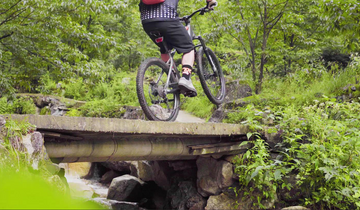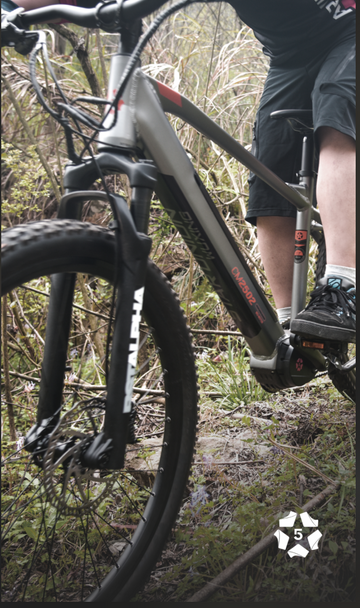
Hydraulic disc brakes have become a popular braking system in modern bicycles due to their superior braking power and stability. They are commonly found on high-end mountain bikes, road bikes, and electric bikes. However, like any mechanical system, hydraulic disc brakes can experience issues, and brake failure is a critical one that directly affects your safety on the road. So, what should you do when your hydraulic disc brakes fail?
In this blog post, we’ll explore the common causes of hydraulic disc brake failure and provide effective solutions to fix the issue. Whether you're an experienced cyclist or a beginner, this guide will help you quickly diagnose and fix the problem.
1. Low Brake Fluid or Air in the System
Hydraulic disc brake systems rely on brake fluid to transfer force. Ensuring that the fluid level is adequate and that no air has entered the system is essential for proper brake function. If the fluid is low or air has entered the brake lines, you may experience soft brake feel or complete brake failure.
Solution:
· Check Brake Fluid Level: Use the appropriate tools to check the brake fluid level. If it's too low, top it up with the recommended brake fluid. Be sure to use the correct fluid to avoid damaging the system.
· Bleed the Brakes: If the fluid level is fine but the brakes still feel weak, air may have entered the hydraulic system. You'll need to "bleed" the brakes to remove any air bubbles from the brake lines. Follow the instructions in your user manual or visit a professional mechanic for assistance.
2. Worn Brake Pads or Rotor
Over time, brake pads and rotors wear down, which can result in reduced braking performance. This is especially common in wet or muddy conditions, where brake pads may wear more quickly, potentially causing brake failure.
Solution:
· Inspect Brake Pads and Rotors: Use tools to check the thickness of the brake pads. If the pads are too thin, replace them with new ones. Also, inspect the rotors for signs of excessive wear or scratches. If the rotors are damaged, they may need to be replaced as well.
· Clean the Braking Surface: Sometimes, dirt, oil, or grime can accumulate on the brake pads or rotor, affecting braking performance. Use brake cleaner to clean both the rotor and pads to ensure they are free of debris.

3. Issues with Brake Lever or Brake Hose
The brake lever or brake hose can malfunction due to improper use or internal component failure. Common issues include lever sticking, not returning to its original position, or the brake hose being damaged.
Solution:
· Check the Brake Lever Freeplay: First, check the brake lever’s free play. If the lever pulls in too far with no resistance, it may indicate fluid loss or air in the system. Bleeding the brakes can resolve this issue.
· Inspect the Brake Lever for Damage: If there’s a problem with the brake lever’s internal components (such as the spring), it might need to be disassembled and repaired.
4. Brake System Leaks
Leaks in the hydraulic brake system can lead to brake failure or reduced braking efficiency. Leaks usually occur at hose connections, cylinders, or seals.
Solution:
· Inspect Brake Hoses and Fittings: Carefully check the brake lines and hose connections for any fluid leaks. If you notice any leakage, replace the damaged parts immediately.
· Check the Cylinder and Seals: If the brake system is leaking from the cylinder or seals, you may need to replace the seals or the entire hydraulic cylinder.

Conclusion
While hydraulic disc brakes are reliable and effective, they can still experience issues from time to time. When you encounter brake failure, don’t panic—following the steps above will help you diagnose and fix the problem. If you’re unsure about performing any of these fixes yourself, it’s always a good idea to take your bike to a professional mechanic to ensure everything is functioning properly.
Proper maintenance and regular inspection of your hydraulic disc brake system are essential for ensuring a safe and smooth riding experience. By keeping your brakes in top shape, you’ll enhance your safety and extend the life of your bike’s braking system.




